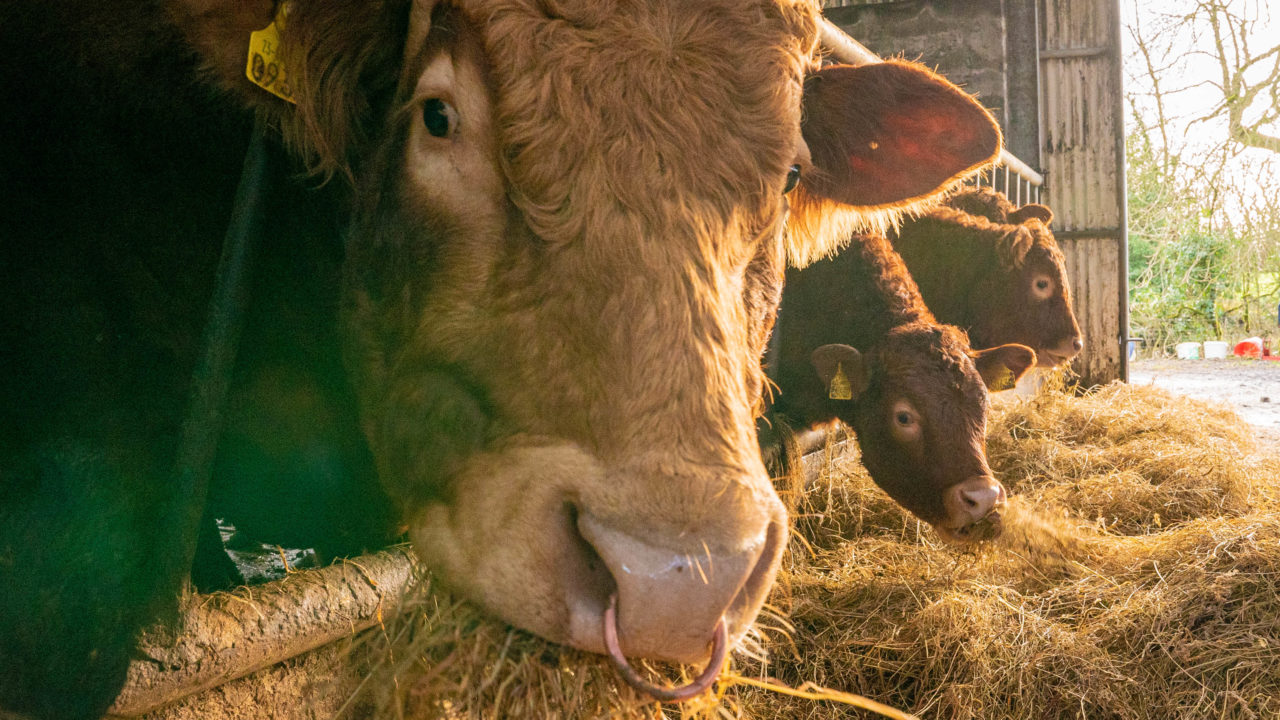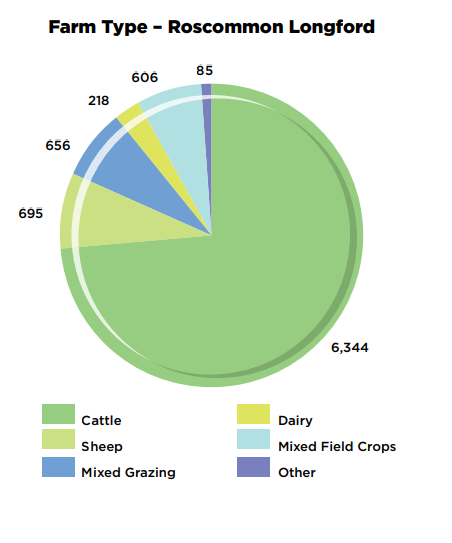The importance of beef farming across six counties in the midlands and border regions has been emphasised in new reports published by Teagasc.
It is part of a series of 12 regional reviews for 2021 prepared by the national farm advisory service.
In the review for Westmeath, Offaly, Cavan and Monaghan, Teagasc outlined that there is a total of 16,173 farms in the region according to the census of agriculture 2020.
This is down 3.5% from 16,768 farms recorded in the region in the previous census in 2010.
Here are some of the key findings from this regional review:
- The average farm size is 31ha;
- The region has almost 145,000 dairy cows, over 142,000 suckler cows and nearly 338,000 sheep;
- Over 80% of farmers in the region have a beef enterprise;
- 10.5% of farmers have a dairy enterprise;
- There were 1,724 farmers with sheep;
- €121 million in Basic Payment Scheme (BPS) payments in the region in 2021;
- Almost €4.5 million in Beef Data and Genomics Programme (BDGP) payments;
- €5.7 million in Beef Environmental Efficiency Programme Suckler (BEEPS) payments;
- Nearly €3 million in payments under the Targeted Agricultural Modernisation Scheme (TAMS);
- The average age of farmers in the region is 57;
- 11% of farmers are women;
- 250 farms are currently part of the Organic Farming Scheme (OFS).
Beef farming is the most important enterprise in the region with just over 11,000 specialist producers. There were 8,700 suckler farms.
The review noted that 2021 was a year of rising beef and mart prices but this was set against a backdrop of an average 8% increase in costs, especially due to feed, energy and fertiliser prices.
A further 12% increase in costs is being forecast on Irish beef farms this year.
Dairy is the main enterprise on 1,672 farms, with an average herd size of 86 cows and average farm size of 60ha.
Teagasc stated that if normal weather conditions prevail this year, there will be a decline in the average dairy farm income to around €80,000 due to increased costs, despite an expected milk price of 40.6c/L for the year.
The report noted that there has been a 15% increase in dairy farm numbers in Offaly and Westmeath – from 505 milk suppliers in 2010 to 584 in 2020.
Sheep farming accounts for around 10% of enterprises in the region; there are 945 specialist sheep farms with 2,253 flocks.
Although lamb prices increased by 30%, costs on sheep farms rose by around a fifth in 2021.
The report stated that payments totaling over €980,000 were made to farmers under the Sheep Welfare Scheme in 2021.
There are 199 specialist tillage farmers in the region, mainly in Offaly and Westmeath with spring barley and malting barley the largest crop grown.
The region has 218 commercial pig producers, with an average size of 524 sows.
Two thirds of Irish broiler farms are located in the Cavan Monaghan region, while 75% of egg-producing farms are in this same area.
In 2020, 298ha of forestry was planted in the region. Just over 9% of the land Cavan is planted; in Monaghan it is 4.6%; it is almost 15% in Offaly; and 8% in Westmeath.

The review for the Roscommon/Longford region shows there are 8,604 farms, with an average size of 28ha.
Again, beef farming is the dominant enterprise in this region.
There were 73,820 suckler cows, 21,150 dairy cows and over 334,000 sheep recorded across the two counties last year.
Some of the other main findings in the report include:
- 45% of holdings are less than 20ha;
- The average age of farmers in the region is 58;
- 13% of farm holders are women;
- Over 80% of farmers have a beef enterprise;
- Just 3% operate a dairy business;
- 212 participate in the Organic Farming Scheme (OFS);
- €56.7 million in Basic Payment Scheme (BPS) payments in the region in 2021;
- Almost €2.6 million in Beef Data and Genomics Programme (BDGP) payments;
- €3.5 million in Beef Environmental Efficiency Programme Suckler (BEEPS) payments;
- Beef Emergency Aid Measure (BEAM) payments of €950,000;
- €960,000 in payments under the Targeted Agricultural Modernisation Scheme (TAMS);
There are 6,344 specialist beef producers in the region. When farmers in mixed grazing and mixed cropping groups are included, in excess of 80% of farmers in the two counties have a beef enterprise.
There are 5,700 suckler farmers in the region with 73,820 suckler cows and an average farm size of 27ha.
There are 695 specialist sheep producers across Roscommon and Longford. In total, there are 2,253 flocks in the region – that’s almost 26% of farms.
Payments totaling over €860,000 were made to farmers in the counties under the Sheep Welfare Scheme last year.
There are just 218 specialist dairy farmers in the region. In total, there are around 280 farms with dairy cows.
The average herd size was 83 cows, with an average farm size of 60ha.
There are just 13 commercial pig producers in Roscommon/Longford, which had an average size of 650 sows.
In Roscommon, forestry cover accounts for 11.7% of land area or 28,754ha. In 2020, a further 273ha was planted, of which 115ha was planted by farmers.
In Longford, forestry cover accounts for 8.6% of land area or 9,517ha. In 2020, a
further 124ha was planted, 36ha of that was planted by farmers.


